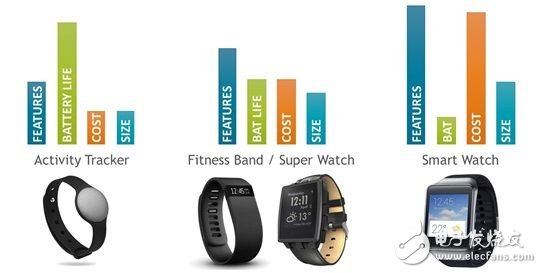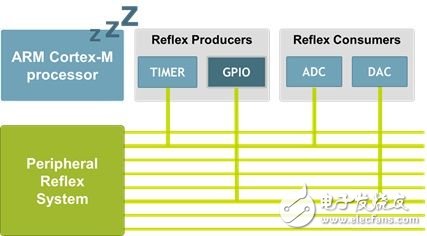In today's competitive, highly competitive wearable market, the key to success is differentiated product features and services. Manufacturers and service providers compete for the same wearable "market pie." Successfully designing wearable products is a complex project. A successful product requires a perfect combination of cost, performance, functionality, and battery life, and must have a compelling look, feel, and performance to appeal to consumers. We need to focus on the end-user experience and explore usage scenarios to integrate different elements in wearable products and complete complex trade-offs. Typical embedded systems usually begin with functional and capability definitions, which are the key drivers of the project. Similarly, successful wearable product design needs focus on the "user experience." These needs include the look, feel, and interaction with the end user of the wearable product, as well as the impressions, feelings, and emotions it causes. Today there are many wearable products that monitor health and biometrics, track distances, record movements, estimate energy consumption, and call and email notifications, while seamlessly integrating and communicating with our smartphones. These wearable product designs are very user-focused; they are stylish, feature-rich, easy to use, affordable, and connectable to the Internet of Things (IoT). The wearable market can be divided into three product categories, each of which requires a design trade-off, as shown in Figure 1: â— Activity Tracker: These relatively simple products often do not include an LCD display. One of the benefits of this simplicity is that these products are economical, easy to use, and often have the longest battery life. â— Fitness belts with "small or medium-sized displays" and "super watches": These wearable products may include a variety of biological and environmental sensors and choose the best balance between features/functions, battery life and cost. â— Smart watches: These watch-sized complex designs occupy the high-end market and usually run on top of operating systems such as Android Wear. Smart watches offer a feature-rich user experience, but more features and processing power consume more battery power and usually require charging every day. Figure 1: Each type of wearable product requires a unique design trade-off A key device choice in wearable products is the microcontroller (MCU). Choosing an MCU with excellent low-power operation is the key to most wearable applications. In today's 32-bit architecture, the ARM Cortex-M family has become the leading low-power processing platform. The Cortex-M0+ is a 2-stage pipeline architecture that provides the best trade-off between performance efficiency and low active mode current consumption. The Cortex-M3 and M4 processors offer a 3-stage pipeline with good power and performance balance. The M4 processor's single-precision floating-point unit and DSP extensions greatly reduce execution time and energy consumption for software algorithms, such as the Kalman filtering algorithm commonly used to extract information from noise sensor data. Smart watches require more advanced processors (such as the Cortex-M7) and proprietary cores to trade off some of the power of higher processing power and high-bandwidth memory interfaces. Table 1 summarizes the key processing capabilities and feature requirements required for major wearable product types. Table 1: ARM Cortex-M Series meets all types of wearable product needs Choosing the right battery technology is also an important design consideration. Disposable batteries have the advantage of not requiring any special charging circuitry; they also have better energy density and provide more energy capacity. The downside is that they make mechanical design more complicated and limit the ease of use of the overall product. Rechargeable batteries offer a slimmer design, but add cost and design complexity. Regardless of the choice, wearable products require a small form factor, which limits the size and energy of the battery. Wearables require a system-level solution that focuses on minimizing energy consumption at all levels, including hardware and software. In the pursuit of longer battery life, designers of wearable products cannot sacrifice a good user experience for energy efficiency. Fortunately, MCUs now have a balance between optimal performance and low power optimization for longer battery life. In addition to low power current, fast wake-up time is also one of the key features. A fast transition from sleep to active state results in better system response and reduced power consumption. MCUs with flexible wake-up sources, ultra-low-power timers, and serial interfaces also offer designers a powerful choice. More advanced MCUs provide efficient peripherals even when the MCU is in a sleep state. A typical example of this autonomous peripheral technology is Silicon Labs' Peripheral Reflex System (PRS), shown in Figure 2, in the EFM32 Gecko MCU peripherals, such as analog-to-digital converters (ADCs) and direct memory. The access (DMA) engine is capable of autonomously responding to external input or interrupt triggering without any CPU involvement. This method can set the MCU to sleep, and can wake up after the input from the sensor exceeds the preset threshold, instead of letting the MCU continuously query the same sensor in an active, high-power state. Figure 2: Peripheral reflection system saves system power by enabling the MCU peripheral to run autonomously and keeping the processor core in a sleep state CMOS-based sensors on wearable products provide the foundation for a rich user experience, enabling new applications and use cases. There are three main categories of wearable product sensors: motion sensors, environmental sensors, and biosensors. Each sensor type provides unique insight into end user activity, environment, and health. When combined, they are more powerful. The combination and use of sensors in wearable products requires many trade-offs. Optical sensors require materials that can penetrate light. The power of a particular sensor may need to be gated so that they do not become a permanent load on the battery, but this approach adds design complexity. The expected user experience, cost, and use cases ultimately drive the optimal level of sensor integration in wearable products. Mobile apps are an important part of any wearable solution, and Bluetooth Smart has quickly become the primary wireless solution for connecting wearables to mobile devices based on iOS and Android. Bluetooth Smart has an optimized low power mode of operation. It is ideal for transmitting sensor data, synchronizing user information, and providing over-the-air update support. Smartphones provide a very flexible user interface, and the app implements a rich set of personalization capabilities that cannot be easily implemented separately through wearables in other ways. However, adding and using a wireless connection increases design costs. Successful wearable designs require careful balancing. Wireless transmission is usually the highest energy consumer in a wearable system. Deciding how much and how often a message is transmitted or how often the wearable product synchronizes with the smartphone will have a huge impact on the battery life of the final product. The use of high data volumes can reduce battery life to hours or days. A more conservative approach may extend the life of the same product to weeks or months. The wearable market may no longer be in its infancy, and with the continuous breakthrough of low-power MCUs, CMOS-based sensors and wireless SoCs, we are now on the eve of a new era of wearable product innovation. As more accurate sensor-driven end-user data can be accessed more easily, the wearable device can reliably and uniquely identify the user. The transition from health and activity tracking to secure and reliable user identification opens up new opportunities in healthcare, security, mobile payments and social networking. The first wearable product to get a compelling user experience at the right cost in these areas will be the next big winner in the market.
DIN Electric Bell
The electric bell is suitable for audible signaling for intermittent use only in domestic and commercial installations.We are manufacturer of Low Voltage Electrical in China, if you want to buy Electric Bell,Patent Intermittent Electric Bell, please contact us.
Korlen electrical appliances also produces other low voltage electric appliances, for example, overload protector which can do over-current & short circuit protection. The overload protector is popular at customers.
Electric Bell Low Voltage Electrical,Electric Bell,Patent Intermittent Electric Bell Wenzhou Korlen Electric Appliances Co., Ltd. , https://www.korlen-electric.com


